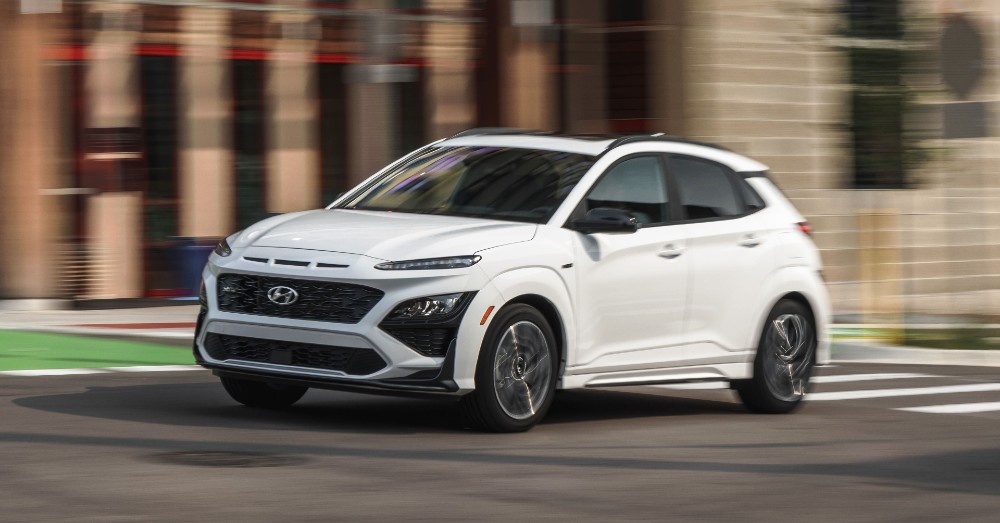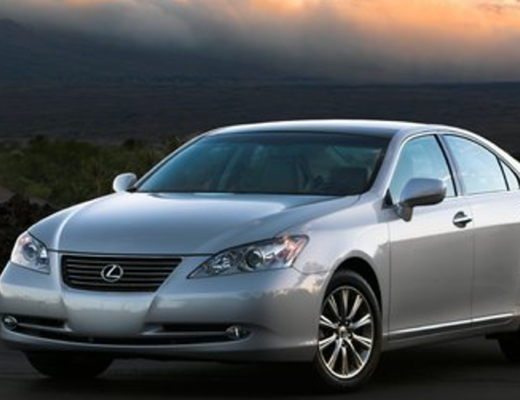Subcompact crossover SUVs are taking over the market, and electric versions are signaling the future of driving.
The Hyundai Kona is an SUV that adds an EV version to the mix, while the Chevy Bolt started as a small car and has grown into the SUV class. Although the path to the new market is different for each model, they now compete head-to-head for your attention.
How Much Room is Found in Each Electric SUV?
The Kona EV brings a cabin that gives rear passengers 35.2 inches of legroom, which is a half-inch more than gasoline models. You’ll find 19.2 cubic feet behind the rear seats, which expands to 45.8 cubic feet when the seats are folded. The dashboard features a 10.25-inch infotainment screen and an equally large driver information display. As you climb the trims, you’ll find upscale materials and an impressive level of comfort for such a small vehicle.
Moving to the Bolt EUV, you’ll find plenty of headroom to ensure no one ever feels cramped. The Bolt has three additional inches of legroom for rear passengers compared to the EV car version. This vehicle’s cargo room is smaller than in the Hyundai Kona EV.
The area measures 16.3 cubic feet, but that area expands to 56.9 cubic feet when the seats are folded, giving you more room for your gear than in the Kona. You’ll find an 8.0-inch digital gauge cluster and a 10.2-inch touchscreen from the driver’s seat. Similar to the Hyundai, as you climb the trims, you’ll find better materials for more comfort during your drive.
The Bolt EUV has more room for cargo, but only when the rear seats are down. If you’re going to drive one of these SUVs with kids in the back, the Kona EV offers more room for their gear.
Which EV SUV Offers More Safety Features?
The standard safety features you’ll find in the Hyundai Kona EV include:
- Forward-collision avoidance
- Automatic emergency braking
- Pedestrian detection
- Blind-spot monitoring
- Lane-keep assistance
- Lane-follow assistance
- Driver attention warning
- Rear occupant alert
You can add more safety with adaptive cruise control with stop/go functionality, automatic high beams, and rear parking sensors when you move to the top trim level.
The Chevy Bolt EUV has a standard package of features called Chevy Safety Assist. This safety package includes:
- Automatic emergency braking
- Pedestrian detection
- Lane departure warning
- Lane-keeping assist
This Chevy can also be upgraded at the highest trim to give you more safety. Additional items include Super Cruise (a form of semi-autonomous driving developed by Cadillac), rear cross-traffic alerts, and a 360-degree surround-view monitor.
The Hyundai Kona EV is packaged with more standard safety features to give you a better package in the base model but does not offer the benefits you can find with the Super Cruise feature. To enjoy this item, you do have to reach for the highest trim of the Chevy Bolt EUV.
What do You Get for the Money?
Let’s take a look at the features offered for the base models of these two electric SUVs. The Kona EV begins at $34,000 for the SEL trim and it offers you:
- Keyless entry
- Push-button starting
- Heated front seats
- Roof rails
- Rear privacy glass
- Heated side mirrors
- 17-inch alloy wheels
- Blue Link Connected Car system
- 8-inch touchscreen
- HD/satellite radio
- Two USB ports
- Safety features mentioned
This base trim is also eligible for several options. These include a power sunroof, heated front seats, automatic climate controls, a leather-wrapped steering wheel, an under-floor storage tray, and wireless charging.
The Bolt EUV begins at $33,500 for the LT trim, which is the base model. This version gives you:
- LED front and rear lighting
- Cruise control
- Dual-level charging cord
- Included fee for home installation of Level 2 charger
- One-pedal driving mode
- Chevy Safety Assist
- 10.2-inch touchscreen
- 8.0-inch gauge cluster
This electric SUV can be upgraded with a panoramic sunroof and wireless Apple CarPlay/Android Auto to give you more features for the drive.
For $500 more, the Hyundai Kona EV has a much longer list of standard features, making it the electric SUV with the most value for you.
How Does the Power and Range Compare for the Kona EV and Bolt EUV?
Power for the Kona EV comes from a permanent-magnet synchronous motor that uses a 64-kWh lithium-ion battery pack. This system produces 201 horsepower and 291 lb.-ft. Of torque for the drive. This powertrain gives you 258 miles of driving from a full charge. Using a 240-volt charger, the batteries can be replenished in 9.5 hours, but a fast-charging DC station can return 80 percent capacity in 54 minutes.
The Bolt EUV uses an AC synchronous electric motor powered by a 65-kWh lithium-ion battery pack.
You’ll have 200 horsepower and 266 lb.-ft. Of torque along with 247 miles of driving range in this SUV.
Recharging the Bolt battery pack takes seven hours, and a DC Fast Charger can add 100 miles of range to the batteries in thirty minutes.
More power and a longer driving range are what you find in the Hyundai Kona EV. Recharging times are better for the Chevy Bolt EUV, which makes this part of the comparison difficult to decide.
Pros and Cons of Each
2022 Hyundai Kona EV
Pros
- Zero-emissions subcompact crossover
- Excellent driving range
- Long list of standard features
- Wireless Apple CarPlay/Android Auto standard
Cons
- Limited availability
- Front-wheel drive only
2022 Chevy Bolt EUV
Pros
- More spacious than the Bolt EV
- Longer than the Bolt EV by six inches
- More rear legroom than the car version
- First Chevrolet model available with Super Cruise
Cons
- Less range
- Less cargo room than the Kona EV
- No federal tax credit
- Front-wheel drive only
Based on this comparison, you should drive the Hyundai Kona EV. The Kona offers more room, power, features, and a better driving range than the Chevy Bolt EUV. You’ll have to part with a little more money, but the Kona is still eligible for the federal tax credit, bringing the overall price down significantly.
This post may contain affiliate links. Meaning a commission is given should you decide to make a purchase through these links, at no cost to you. All products shown are researched and tested to give an accurate review for you.




